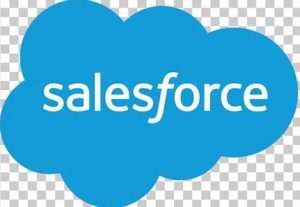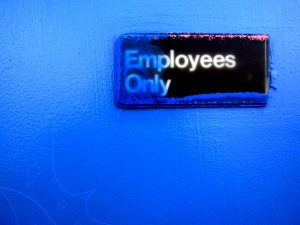The Marketing Role Of A Salesforce Developer At The Airline Company
 A salesforce developer supports airline marketing by using smart tools. Their work increases passenger interest and booking efficiency across systems.
A salesforce developer supports airline marketing by using smart tools. Their work increases passenger interest and booking efficiency across systems.
Salesforce developer designs targeted campaigns
A salesforce developer builds smooth journeys for potential flyers. These journeys guide each visitor toward a booking. They use customer data stored in the system to adjust each experience. This increases the chance of a ticket purchase. Airlines need repeat travelers, so each journey must lead to loyalty. Developers enable this by setting precise triggers. When users search, browse, or click, new offers follow. This makes passengers feel seen and valued. As a result, they are more likely to return for future flights.
Campaign execution relies on timely data. Developers automate this process to avoid delays. When travelers search certain routes, the system sends ads immediately. This quick action increases relevance. While salespeople design messaging, developers ensure the message arrives on time. Therefore, each message feels personal to the traveler. Developers help keep data current for every step. As trends change, so do the campaigns. By managing this pace, the airline stays ahead.
Data personalisation and smart targeting
Each traveler has unique habits. A salesforce developer tracks these and updates user profiles. When data updates in real time, marketing remains fresh. Developers set rules for grouping travelers. These groups receive custom offers based on their behavior. This can include seat upgrades or early boarding perks. Through this approach, campaigns feel handpicked. When flyers engage more, revenue grows steadily. Developers link these patterns to updated messaging. The system adjusts each day as new searches come in.
Marketing teams then craft stronger strategies. Developers support this by feeding them clean data. Accuracy matters in personal campaigns. One wrong step can lose a flyer’s trust. But with clean profiles and consistent tracking, mistakes drop. Passengers see only relevant messages, which boosts trust. Over time, this makes flyers feel loyal to the airline brand. Developers also add filters to block outdated information. With these in place, systems stay lean and quick.
Automation of email campaigns
Emails work well in airline marketing. However, timing and language must align. A salesforce developer sets rules for each email type. These can include booking reminders, weather updates, or loyalty points. By linking these messages to real-time actions, airlines stay responsive. Developers use workflows to trigger messages as users interact. For instance, when someone abandons a cart, a friendly reminder follows. This keeps the airline fresh in the traveler’s mind.
Each campaign connects to the data layer. Developers ensure that the email engine accesses updated values. This could include the passenger’s name, destination, or preferred seat type. When all information fits, emails feel natural. Flyers respond more often when messages look tailored. Automation helps save time while boosting campaign reach. Developers also schedule tests to check accuracy. These prevent errors like empty fields or broken links. A single mistake can hurt trust. So developers use testing tools at each step.
Integrating CRM with booking systems
Marketing thrives when all systems work together. A salesforce developer joins the CRM with booking tools. This integration allows airline staff to track actions quickly. When someone books, changes plans, or browses, the CRM stores each move. Developers use APIs to connect these platforms. These links enable smart tracking and clear reports. Marketing teams use this data to improve offers.
Real-time updates make customer service faster. Staff can view each interaction on one screen. Developers design dashboards for this function. When support teams access good data, they respond well. Marketing depends on this strength. Happy flyers spread positive feedback. Developers ensure that the CRM speaks to each department. Marketing, service, and finance now share one source. This reduces confusion and speeds up campaign planning. Data flows better, which drives better decisions.
Landing page optimisation
Each campaign leads to a landing page. A salesforce developer helps design and monitor these pages. Speed and layout affect how users act. Developers remove clutter and test different versions. When clicks improve, bookings rise. Developers use A/B testing to compare layouts. These changes help find the best format. Airlines want passengers to act fast. So page design must remove friction.
Pages also load faster with smart coding. Developers compress images, fix bugs, and remove excess code. Fast pages improve search ranking and customer retention. Developers link CRM data to these pages. When a returning flyer lands, the page shows deals based on past trips. This adds value and makes the site feel alive. Flyers stay longer, click more, and trust the brand.
Tracking marketing performance
Salesforce developers create dashboards to track each campaign. These show how well messages perform. Metrics like click-through rates and bookings display in clear graphs. Teams use these insights to improve future launches. Developers set up automation to refresh these dashboards daily. Data accuracy matters, so updates must be fast. This helps marketers react quickly to trends.
If campaigns underperform, developers check the logic. Flawed triggers or weak filters might cause problems. Developers fix these issues so future campaigns succeed. They also add alerts for drop-offs. When engagement drops suddenly, the system notifies staff. Teams respond faster, saving time and revenue. These dashboards help all departments stay aligned. Developers provide each unit with the right view.
Security of customer data
Flyers trust airlines with personal data. Developers protect this trust through tight security. Salesforce developers set access limits based on roles. They encrypt sensitive fields and monitor user actions. Marketing teams access only what they need. This prevents leaks and reduces exposure. Developers also run tests to spot weak spots. They patch gaps and track login history.
When users request data removal, developers act fast. Airlines must meet privacy laws, so systems must allow quick action. Developers automate removal processes to stay compliant. They also create audit logs to track data use. This record helps airlines stay clear during reviews. Safe systems help protect the airline’s name. Flyers stay loyal when they feel secure. Developers provide this safety layer daily.
Mobile app integration
Flyers use apps more than websites. A salesforce developer connects marketing tools to airline apps. Push messages now reach users on mobile. These can share deals, seat alerts, or delay info. Developers set up filters to avoid spam. Each message suits the user’s pattern. Apps also store loyalty rewards. Developers update these values in real time. Passengers check their points and make fast upgrades.
Data from the app flows back to the CRM. Developers manage this cycle. The system grows smarter each day. When users browse flights, that info updates profiles. New campaigns then use this insight to stay relevant. Developers ensure that mobile tools match web tools. This keeps the experience smooth. Flyers trust the app, so campaigns work better here.
Improving loyalty programs
Airline loyalty programs matter for growth. Salesforce developers manage the data side. They update tier levels, redeemable points, and bonus offers. Each flight adds value to a traveler’s profile. Developers sync these updates across platforms. When someone logs in, their rewards must appear fast. Developers make this happen by linking systems tightly.
Campaigns based on loyalty boost retention. Developers group flyers by spend, routes, or status. They create smart lists that power email blasts. These blasts focus on keeping travelers active. Upgrades, priority boarding, and deals motivate bookings. Developers manage these lists using real-time filters. Flyers stay engaged when they feel valued. The airline wins long-term growth.
Connecting social campaigns
Social media drives traffic fast. Developers connect campaign tools to social platforms. When ads run on Facebook or Instagram, data flows back. Developers track which flyers clicked and booked. This informs future campaigns. Developers also place pixels on landing pages. These track behavior after the click. Such insight improves spend and return.
Teams then adjust based on social activity. Developers send this data to CRM systems. Profiles grow richer with each click. Campaigns get smarter each time. Developers also test which platform performs best. If Instagram leads to more bookings, teams focus there. Developers support this shift through fast data sync. Social marketing then becomes a key asset.
Building real-time alerts
Passengers change plans often. Real-time alerts help them stay updated. Developers create these alerts based on flight data. Changes in time, gate, or weather trigger alerts. Marketing messages can then link to helpful content. If a delay hits, the alert might share lounge access. Developers handle this mix using rules and logic.
Campaigns tie into these alerts smoothly. Developers ensure that triggered alerts contain clean and fresh data. Each message reflects the latest update. Flyers see this speed as a sign of care. Trust builds each time the airline acts fast. Developers maintain this speed through backend systems. Each message flows fast and clean.
Boosting booking conversion
Every marketing push aims to increase bookings. Developers use tracking tools to measure each funnel step. When drop-offs happen, they identify the cause. Fixes might include layout changes, better buttons, or faster loads. Developers act fast to plug gaps. As a result, conversion improves without more ad spend.
Data from each visitor helps shape the next push. Developers track search terms, device types, and time zones. Campaigns then adjust to match user needs. These updates keep flyers engaged. Developers test multiple paths to find the best booking flow. They share results with the marketing team. This teamwork boosts success.
Supporting chatbots and AI tools
Travelers need fast answers. Developers connect chatbots to marketing data. When someone asks about baggage, the bot responds clearly. These bots use CRM data to sound smart. Developers train them with past queries. As bots learn, service improves. Flyers get answers fast, reducing wait time.
Marketing links to bots too. If a flyer mentions a sale, the bot shares offers. Developers manage this logic. They test response accuracy and update the bot’s memory. As bots help more, campaign reach expands. Flyers ask and receive without delay. Developers keep bots sharp and fast.
Achieving airline goals through technology
Salesforce developers hold the keys to modern marketing. They keep systems running and data clean. They automate each campaign and test every message. Through this steady work, airlines grow stronger. Flyers trust messages, return often, and share good experiences. With each action, developers support the brand’s future.










